
Americans have changed rapidly as a demographic over the decades. In many ways, the American workplace is still catching up with all the changes.
The light industrial and manufacturing sphere has a long tradition. That means there’s a lot of conventional wisdom to build on. It also means it can be easier to rely on “what’s always worked” for the workforce instead of adapting to the new needs of modern workers.
The 2020s have already been filled with change. In the midst of intermittently sky-high employee turnover and worker shortages, many companies are evaluating whether their work cultures, expectations and structures still make sense.
In this piece, we’ll review some of the major worker demographic shifts to help you determine if your company’s approach is ahead of the curve or in need of adjustment.

The Workforce: Past and Present
The light industrial and manufacturing industry doesn’t look like it did 70 years ago, but our modern work reality has been shaped by the past. Let’s examine the origins of our “way of work” and compare 2020s American workers to those in the 1950s when a structured manufacturing economy thrived post World War II.
American Families Have Changed
Three-month moving average of employed people who did not work because of childcare issues
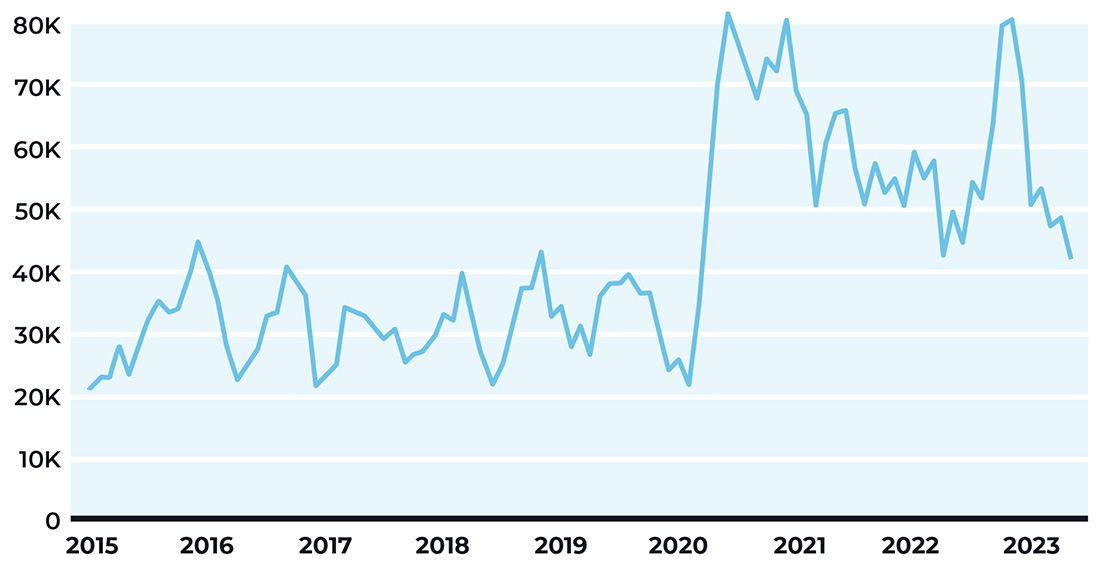
NOTE: Data is seasonally unadjusted
CHART: Madison Hoff/Insider • SOURCES: Business Insider, Bureau of Labor Statistics
The Context
Today, American families face challenges balancing work and childcare. Following 2020, childcare costs have surged due to inflation, becoming increasingly unaffordable for many low-income and middle-class families. Many parents also live in childcare deserts, where there are insufficient daycare slots available for the community population. These factors have led to increased work absences among American parents, as well as an increased desire for a job that gives them a greater work-life balance.
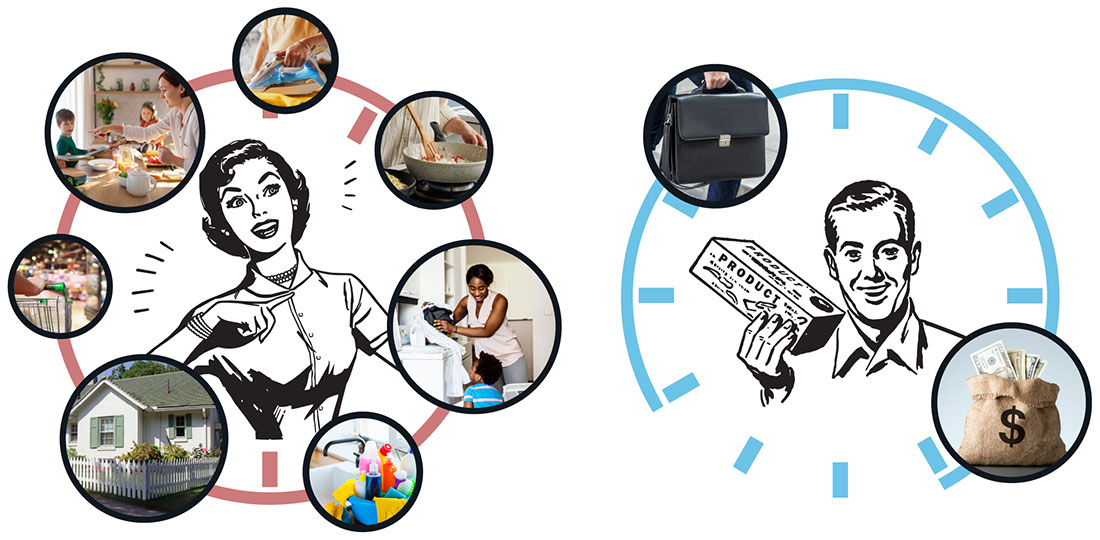
The Tradition
In the 1950s, cultural norms dictated that children were typically born to married couples. Within these marriages, traditional gender roles prevailed, with husbands commonly acting as primary breadwinners and wives focusing on homemaking and childcare. Men adhered to strict, long work schedules to provide for their families, while women had more flexible schedules centered around household responsibilities, affording them the freedom to attend to various tasks and handle unexpected events throughout the day.
The Modern Reality
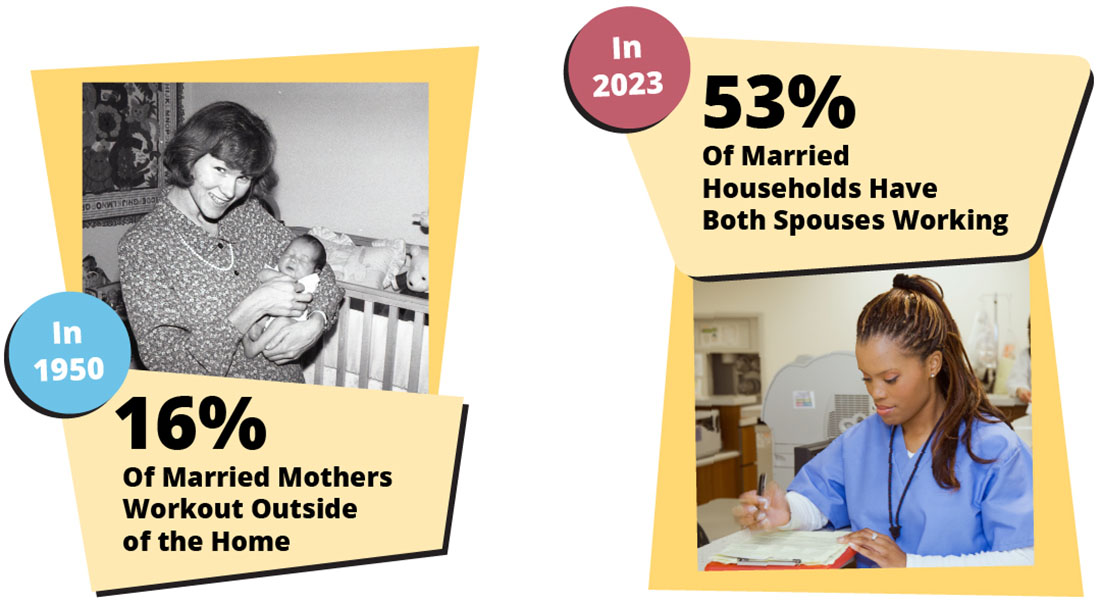
Married Families: Today, a majority of married parents are both working. That means childcare is not “baked” into a family arrangement. Both parents tend to juggle a full work day, household responsibilities, childcare and other caretaking duties.
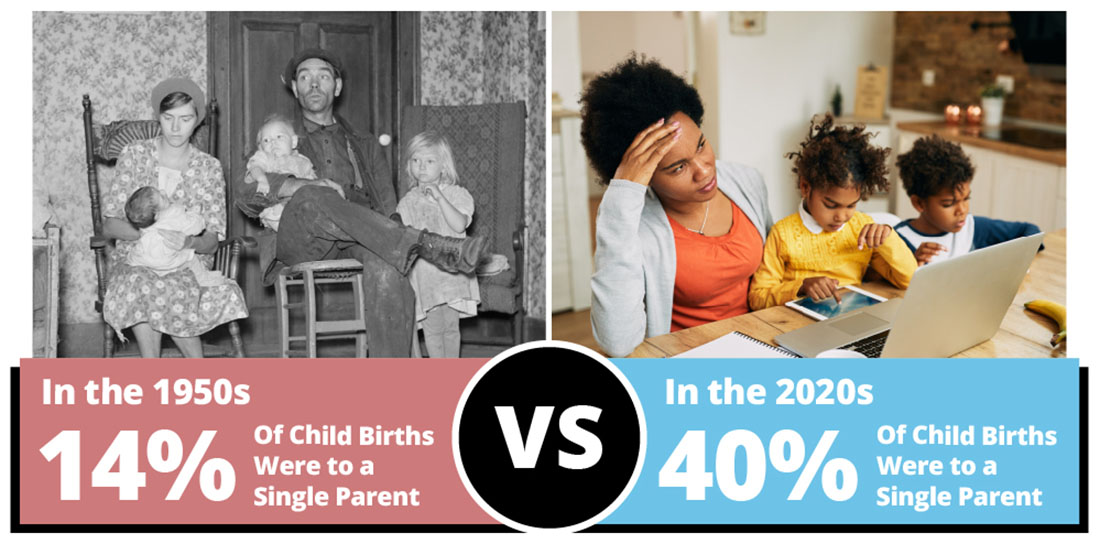
Single Parents: Today, a significant number of children are born to single parents, but single parents face unique challenges in the workforce. Single parents must often manage the responsibilities of two parents with limited support for extended periods while also juggling various household and caretaking duties.

The Challenge For Employers
Attracting Parent Workers
Parents tend to be prime-aged workers, but many parents avoid taking jobs that aren’t child-friendly. That includes jobs with strict schedules, strict attendance policies, and schedules that conflict with school and childcare hours — including in the light industrial and manufacturing industries.
Retaining Parent Workers
Parents may “point out” of work systems that don’t support unexpected caretaking needs. Parents are also likely to leave their current positions in search of jobs that allow them more flexibility to care for their children and more work/life balance.
Parent Workers Often Benefit From:
Flexible Schedule Options
Family-friendly policies: This may include family medical leave, paid parental leave, or even in-house childcare or childcare stipends
Flexible Schedule Options
Affordable benefits with robust health, mental health and financial resources
Family-friendly policies: This may include family medical leave, paid parental leave, or even in-house childcare or childcare stipends
American Workers Have Aged

The Context
American workers are grayer than they used to be. In the 1950s, America was a younger nation. America’s birth rate has declined for over a decade, while the massive Baby Boomer generation is officially in the midst of a retirement boom. For the foreseeable future, America will be an older nation than it used to be. That has many implications for the workforce.
The elderly population is growing rapidly and living longer
U.S. Population Age 65+ (Millions)
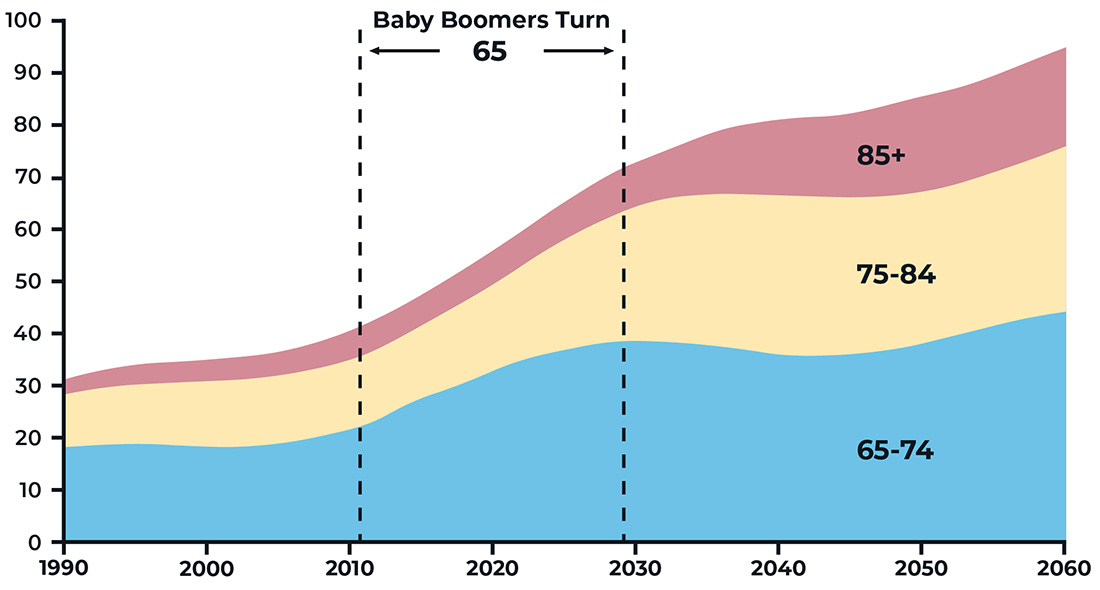
SOURCE: U.S. Census Bureau, National Intercensal Estimates, 2016 Population Estimates, June 1017; and National Population Projectsions, September 2018. Compiled by PGPF.
The Tradition
During the 1950s, the United States experienced a baby boom marked by a substantial surge in birth rates. This demographic phenomenon resulted in a significant increase in the nation’s workforce, shaping labor market dynamics for decades to come. With a larger labor supply came wage declines and intensified competition for jobs. In addition, people didn’t live as long, and people commonly retired with both social security and a pension from their long-term employer.
Annual Percent Change in the U.S. Population: 1900-2021

NOTE: 1917-1919 includes U.S. Armed Forces overseas.
SOURCE: U.S. Census Bureau
Just 45% of U.S. 65-year-olds are retired, compared with 58% in 2000.
By 2040, 1 in 5 Americans will be 65 or older.

The Modern Reality
- Longer life expectancies
- Lower birth rates
- More older workers choose to remain in the workforce
From 2010 to 2020, the population of individuals aged 65 years and over experienced the most substantial and rapid growth since the 1880s due to the aging Baby Boomer generation, while the birth rate has been dropping for over a decade. Older workers will play a crucial role in addressing the looming skills gap and maintaining a stable workforce. That is especially true as many older workers are choosing to remain in the workforce to some capacity.
The Challenge for Employers
- Filling the skills gap created by older workers exiting the full-time workforce
- Creating positions that cater to the unique needs of older workers
- Working with a demographic that has fluctuating health needs and caretaking responsibilities, like caring for a spouse/partner with health issues
Older Workers Often Benefit From:
- Part-time options
- Flexibility
- Age-inclusive policies
- Health and wellness benefits
- Opportunities for intergenerational collaboration
American Workers Are More Diverse
| Race in America | 1950s | 2020s |
|---|---|---|
| White | 87.5% | 57.8% |
| African American | 10.0% | 12.4% |
| Hispanic | 2.1% | 18.7% |
| Other | 0.4% | 7.3% |
The Context
America’s demographic landscape is evolving, characterized by rising racial and cultural diversity, largely influenced by significant immigrant contributions. While immigration temporarily decreased in the 2020s, historical immigration policies will continue to impact the composition of the American workforce.
Number of Immigrants and Their Share of the Total U.S. Population, 1850-2016

SOURCE: migrationpolicy.org
The Tradition
In the 1950s, the United States was characterized by a majority white population. During this time, the immigrant population was declining — a trend that continued until the 1980s. As a result, workplace norms were influenced by dominant white American cultural standards. These cultural norms were widely regarded as the standard workplace etiquette, shaping the dynamics and expectations within workplaces nationwide.
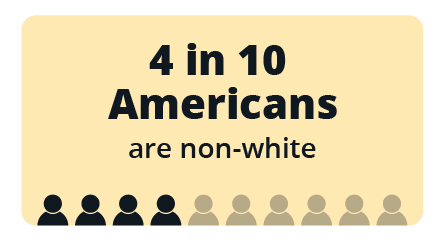
The Modern Reality
Today, 4 in 10 Americans are non-white.
By 2045, whites will be a minority in the U.S., according to the Census.
The Modern Reality
Today, 4 in 10 Americans are non-white.
By 2045, whites will be a minority in the U.S., according to the Census.

Today, America is incredibly diverse and will continue to diversify for decades to come. Many companies are re-evaluating their workplace norms, policies, and leadership styles to ensure diverse workers can be productive and successful. Conversations about diversity and inclusion are prevalent in U.S. businesses, but concrete solutions to address these challenges remain limited.
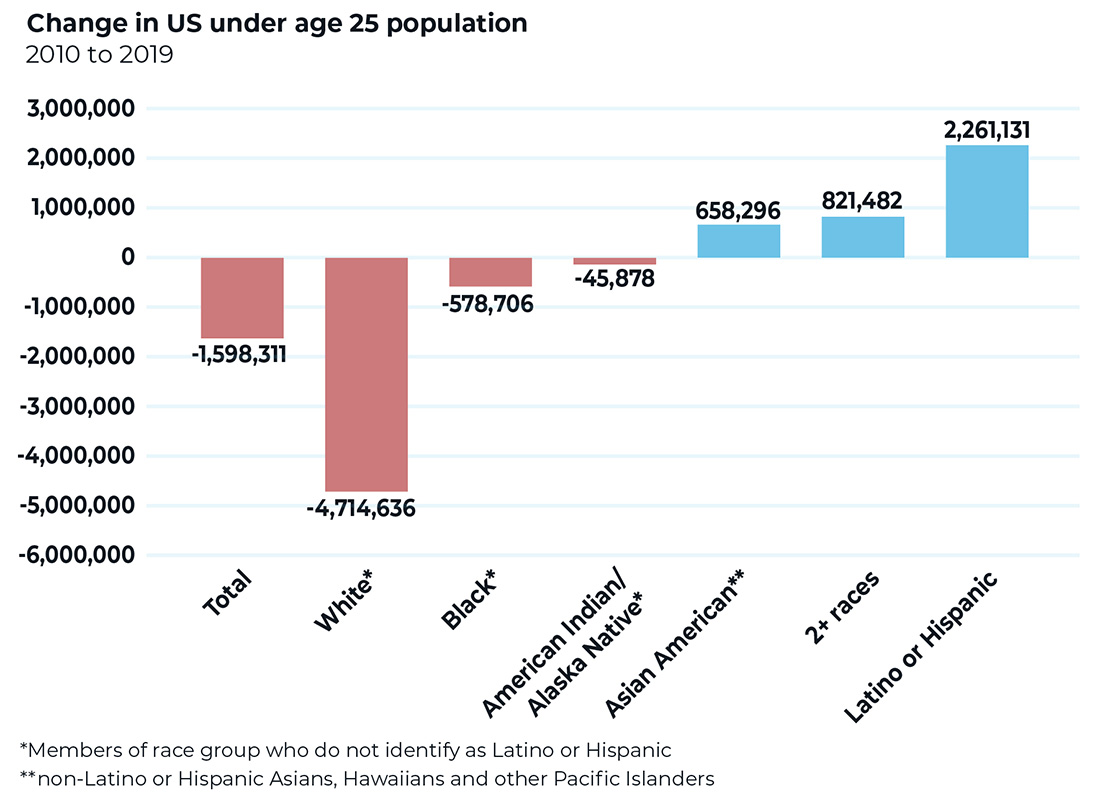
SOURCE: brookings.edu
The Challenge for Employers
- Equipping all employees for productivity and success
- Clearly communicating workplace expectations
- Creating an inspiring team culture that everyone can participate in
- Ensuring current policy standards are fair, clear and effective
Modern Workers May Benefit From:
- Benefits: Ensure all team members have equal access to affordable, comprehensive benefits that give them the tools to thrive at work and in life.
- Skills Development: Provide ongoing coaching so every team member can master the soft and hard skills they need to succeed at work
- Leaders with Great Communication Skills: Lead with a nuanced ability to encourage and support all members of a team to meet goals
Conclusion
America’s workforce has evolved dramatically since the 1950s. And while modern workplaces have also changed, remnants of our “traditional” work structures remain.
The 2020s have been tumultuous, revealing cracks in how our companies respond to modern workers’ dynamic needs. Over the coming decade, we can be sure that more significant changes are coming. Now is the right time to assess how our workforce strategies can adapt.
